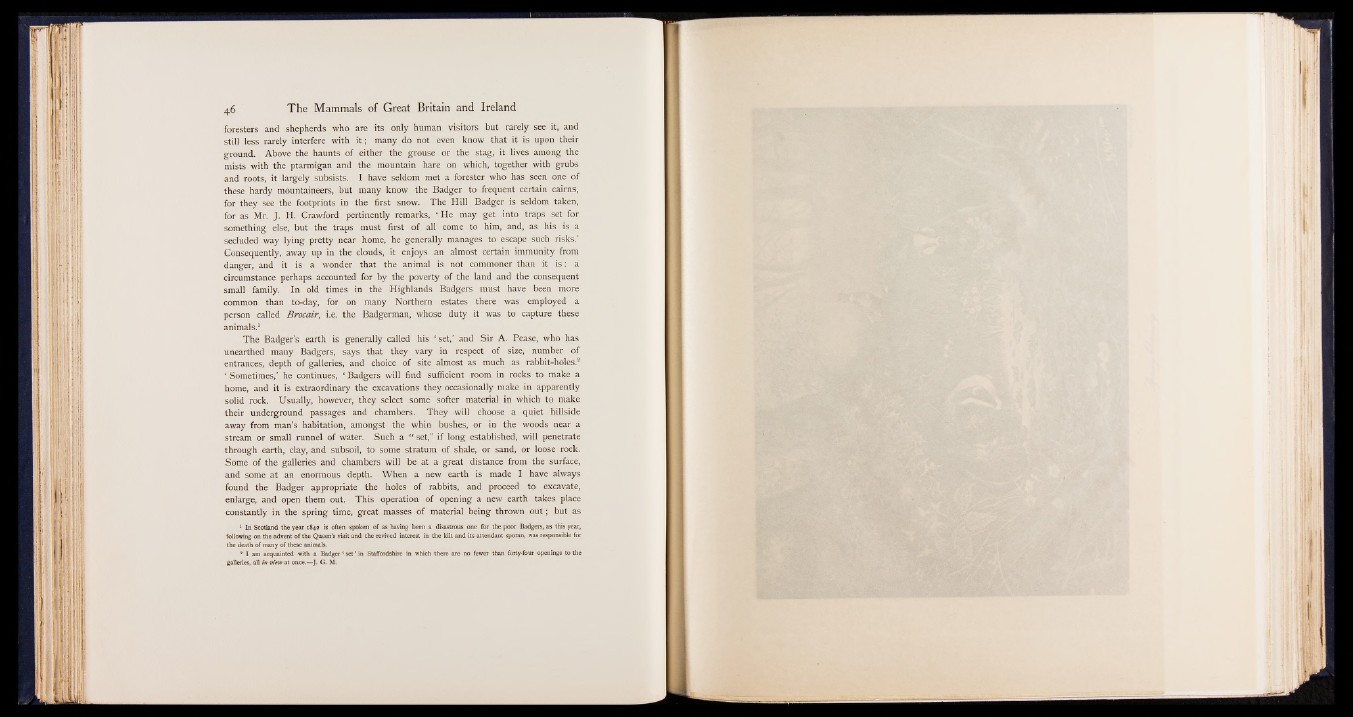
The Mammals of Great 46 Britain and Ireland
foresters and shepherds who are its only human visitors but rarely see it, and
still less rarely interfere with it ; many do not even know that it is upon their
ground. Above the haunts of either the grouse or the stag, it lives among the
mists with the ptarmigan and the mountain hare on which, together with grubs
and roots, it largely subsists. I have seldom met a forester who has seen one of
these hardy mountaineers, but many know the Badger to frequent certain cairns,
for they see the footprints in the first snow. The Hill Badger is seldom taken,
for as Mr. J . H. Crawford pertinently remarks, ‘ He may get into traps set for
something else, but the traps must first of all come to him, and, as his is a
secluded way lying pretty near home, he generally manages to escape such risks/
Consequently, away up in the clouds, it enjoys an almost certain immunity from
danger, and it is a wonder that the animal is not commoner than it i s : a
circumstance perhaps accounted for by the poverty of the land and the consequent
small family. In old times in the Highlands Badgers must have been more
common than to-day, for on many Northern estates there was employed a
person called B ro cair, i.e. the Badgerman, whose duty it was to capture these
animals.1
The Badger’s earth is generally called his ‘ set,’ and Sir A. Pease, who has
unearthed many Badgers, says that they vary in respect of size, number of
entrances, depth of galleries, and choice of site almost as much as rabbit-holes.2
1 Sometimes,’ he continues, ‘ Badgers will find sufficient room in rocks to make a
home, and it is extraordinary the excavations they occasionally make in apparently
solid rock. Usually, however, they select some softer material in which to make
their underground passages and chambers. They will choose a quiet hillside
away from man’s habitation, amongst the whin bushes, or in the woods near a
stream or small runnel of water. Such a “ set,” if long established, will penetrate
through earth, clay, and subsoil, to some stratum of shale, or sand, or loose rock.
Some of the galleries and chambers will be at a great distance from the surface,
and some at an enormous depth. When a new earth is made I have always
found the Badger appropriate the holes of rabbits, and proceed to excavate,
enlarge, and open them out. This operation of opening a new earth takes place
constantly in the spring time, great masses of material being thrown ou t; but as
1 In Scotland the year 1842 is often spoken of as having been a disastrous one for the poor Badgers, as this year,
following on the advent of the Queen’s visit and the revived interest in the kilt and its attendant sporan, was responsible for
the death of many of these animals.
* I am acquainted with a Badger ‘ set’ in Staffordshire in which there are no fewer than forty-four openings to the
galleries, all in view at once.—J. G. M.